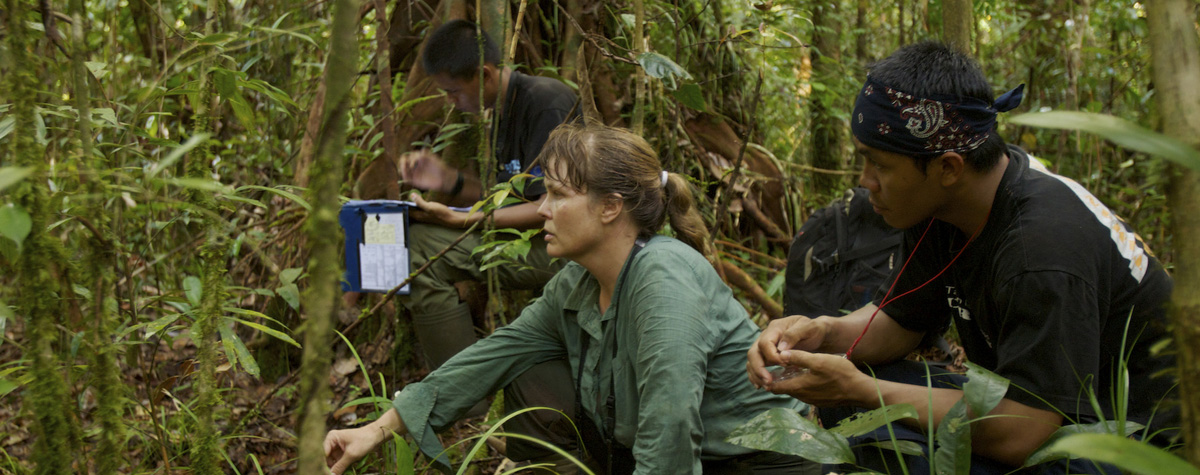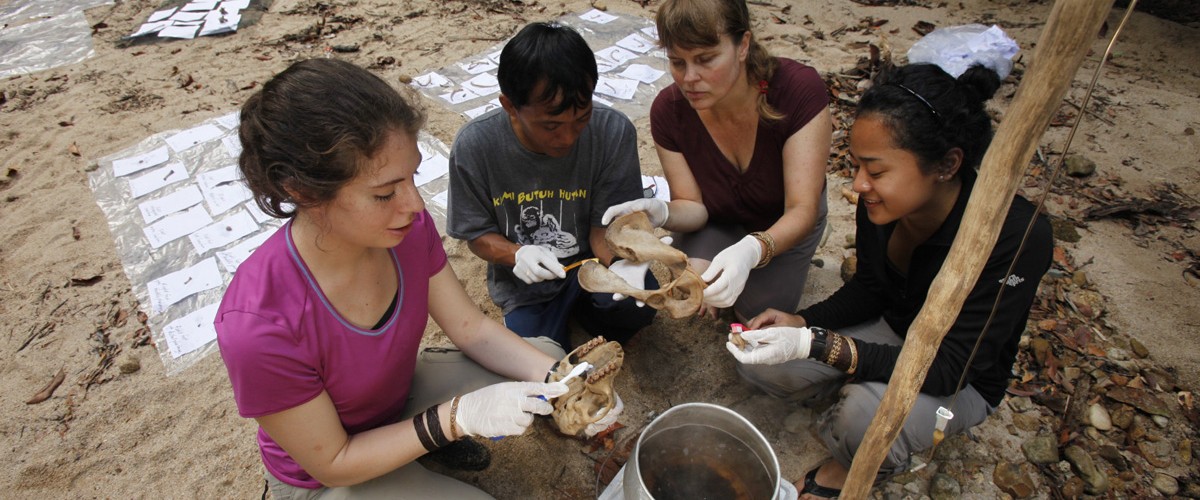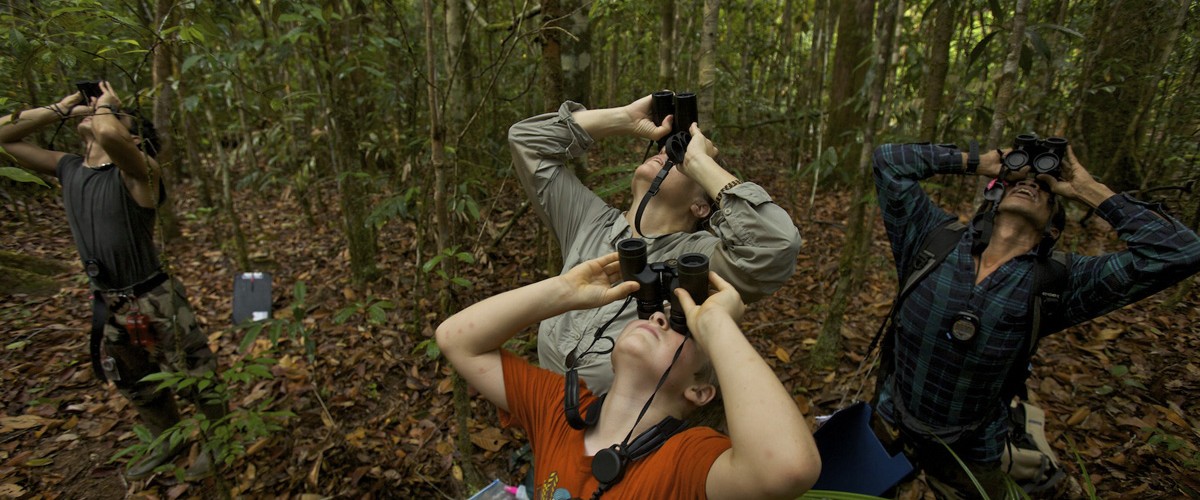By Hajeral, GPOCP Environmental Education Assistant Field Officer
This month, three members of the GPOCP team were able to participate in a field course hosted by Dr. Andrew Marshall, from the University of Michigan, and the National Park staff at the Cabang Panti Research Station, in the heart of Gunung Palung National Park (GPNP). This course was offered to local organizations including National Park staff (BTN), the Natural Resources Conservation Center, known locally as BKSDA, and GPOCP. There were a total of 14 participants who spent 10 days learning about the flora and fauna of the area. GPOCP staff included Mariah Achmad, Environmental Education Manager, Sy. Abdul Samad, Sustainable Livelihoods Field Officer and Hajaeral, Environmental Education Assistant Field Officer.
Mas Endro Setiawan, the head of research at Cabang Panti from BTN, led the course with the aim to build synergy and expand the capacity of conservationists in GPNP. It is the role of the National Park staff to maintain and preserve the GPNP region, but it is relevant for all stakeholders to understand the existing biodiversity the region has to offer.
 |
|
Mas Endro Setiawan giving a presentation about the plethora of flora and fauna the participants will encounter while at Cabang Panti.
|
As you may recall from previous articles, Gunung Palung National Park encompasses 108,000 hectares in the districts of Ketapang and Kayong Utara, West Kalimantan. This beautiful area encompasses eight distinct types of habitat, which includes one of the last stands of primary lowland forest in the Indonesia! GPNP and the surrounding area are home to one of the largest remaining populations of wild orangutans, a critically endangered species. This area also safeguards many other endangered animals including eight species of hornbill, the Malayan sunbear and the pangolin.
During the course, participants were introduced to the tropical rainforest, biodiversity of GPNP, plant and animal ecology, photography, animal footprint identification and the camera trap project, among other topics. They also gained field practice in plant identification, animal surveys, camera trap mounting and vertebrate censusing.
 |
|
Participants in the field course learn how to properly set up camera traps.
|
The camera trap project, run by Dr. Andrew Marshall, was a real highlight for the field course participants to learn about. These cameras allow the team to document animals of the rainforest that would otherwise go unseen, as they are difficult to detect by humans walking census routes. These cameras provide a rare glimpse into the private lives of these secretive animals. Currently, this project has 28 cameras deployed at 14 locations spread throughout the eight different habitats. These cameras have captured the activities of orangutans, red leaf monkeys, gibbons, squirrels, hornbills and many others. The aim is to better document the diversity of Cabang Panti and look at whether primates are using the ground. Research manager, Beth Barrow, stated that the participants were really lucky. In the short period that they were there, the team was able to capture a bearded pig, common palm civet and a long tailed porcupine!
 |
|
The participants heading out for an animal census on one of the transects near Cabang Panti.
|
Another highlight of the field course was the animal census survey. For three days, the participants divided up into several groups and walked the transect areas and documented their findings. The knowledge gained from animal footprint identification section of the course helped the groups as they were more aware of what to look for. Overall, the course was a great success. All parties learned valuable information and field data collection techniques.
 |
|
All of the field course participants together before they made the long hike back to town.
|









